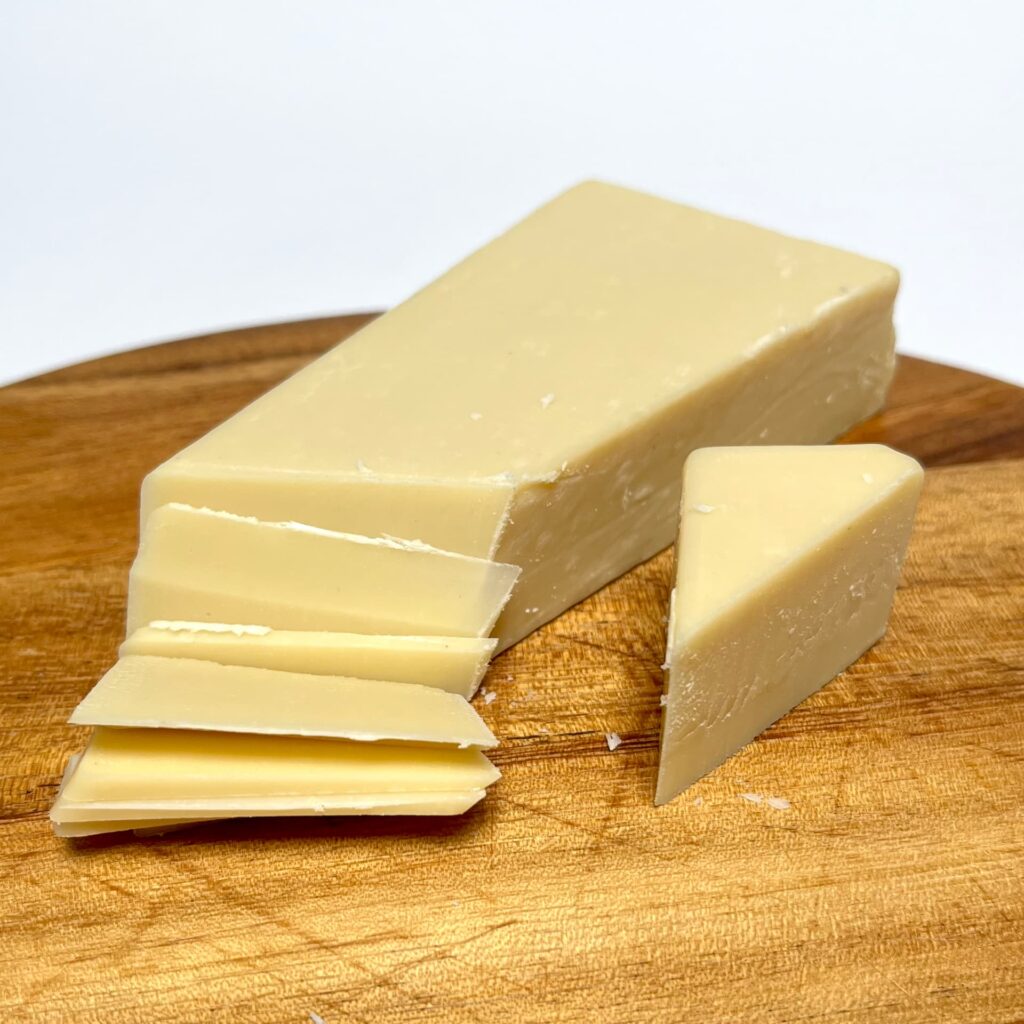



Violife is a brand produced by Arivia S.A. from Greece, which in turn is part of Flora Food Group (known until September 2024 as Upfield) from the Netherlands, self-described as “the largest plant-based consumer product company in the world“.1 Flora Food Group is owned by Kohlberg Kravis Roberts (KKR) from the United States, one of the largest private equity firms in the world.2
As appears to be the case with all Violife products, the main ingredients are starch, coconut oil and modified starch. While unspecified what the starch is derived from on the packaging, it is likely potato starch, as the Violife website FAQ mention: “All Violife products contain potato starch (either native or modified).” 3, 4
The Gran Prosociano looks like it is an alternative to parmesan cheese, given its colour, shape as a parmesan wedge, packaging and Italian-sounding name. When we unwrapped it, we found the smell primarily similar to Cheddarton, which we reviewed the same day, both buttery and cheesy. While it is hard like parmesan, the texture is more pasty than a crumbly, aged parmesan.
The taste is very salty, with notes of butter and potato, whereas parmesan is sharp, nutty and savoury. Unfortunately, as we found the saltiness so overpowering, we thought it is most like a really hard and salty butter. We also noted that of the 36 vegan cheeses we have reviewed so far, this is by some distance the vegan cheese with the highest amount of salt with 3.5g per 100g, where the second highest is the Intense gourmet slices by Simply-V with 2.7g of salt.
Lastly, its hard consistency makes it suitable for grating and shaving, but it does not melt. Both are we assume the result of its high starch to oil ratio, which can be approximated in the nutritional values as 30g carbohydrates (starch) and 15g fat (oil) per 100g respectively. Actually, that means that next to salt, this vegan cheese is also the one highest in carbohydrates of the cheeses we reviewed so far.
Conclusion
Overall, Gran Prosociano is not a cheese we would put on a vegan cheese platter as we think it is just too salty to be eaten on its own. Its main positive is that it is hard like parmesan, so grates very well and it is also easy to cut off fine shavings. From taste point of view, when choosing a hard, aged, Italian type of cheese we clearly preferred the pecorino-style Aged Gondino by Pangea.


